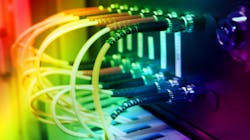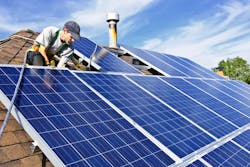A Look At IEEE Standards For DERs And The Grid
For several years, the energy and utilities sectors have been undergoing a fundamental shift from a system dominated by a few central power plants to a more decentralized energy infrastructure. The process by which energy is generated, transmitted and distributed has continuously evolved to include a mix of dispersed, low-carbon and renewable energy sources such as solar, wind, battery storage, microgrids and even electric vehicles. Collectively referred to as distributed energy resources (DERs), the energy industry has seen a rapid increase in the deployment and integration of DER technologies within electric power systems. This transformation is driven by a global push for countries to decarbonize their electric production systems, broader energy production and consumption sectors to make the global energy industry more sustainable.
The growing deployment of DERs means there also is a growing need for standards that address the integration, communication, management, functionality and cybersecurity of DER technologies — all of which are pivotal for safe and effective use within electric power systems. The Institute of Electrical and Electronics Engineers Standards Association (IEEE SA) is at the cutting edge of developing such standards that address the communications, interconnection and cybersecurity of DERs, in tandem with the rapid innovations being made within these areas.
A Paradigm Shift
Before DERs rose in popularity and most of the energy generation was centralized, energy production systems could communicate with the grid through private networks, like supervisory control and data acquisition (SCADA) networks. This lessened the focus on rigorous cybersecurity and communication standards, as communications and operations were done on private networks, not shared with other users and applications.
Cybersecurity Guidelines
While providing more sustainable energy generation options, using DERs with management systems that communicate with electric power systems and optimize grid dynamics through the public internet has created a growing need for strong cybersecurity standards and practices. For example, the IEEE SA Distributed Generation, Energy Storage and Interoperability Standards Committee (SC21) is working on the IEEE P1547.3 Draft Guide for Cybersecurity of Distributed Energy Resources Interconnected with Electric Power Systems, which provides guidelines for the cybersecurity of DERs and their interconnection with electric power systems.
The IEEE P1547.3 guide does not define any new protocols or standards, per se, but rather provides details on how already existing protocols and standards should be used to create secure DER systems. These standards are necessary to combat possible cybersecurity issues that may arise. Such issues could result in not only an inconvenience but also physical damage to the grid and associated safety consequences that would occur if there were a loss of power.
Open Standards
In tandem with the cybersecurity considerations of DER technologies, the industry is beginning to focus on the evolving interconnection and communication standards of DERs and electric power systems. The industry has seen a movement toward the use of open standards in the DER space, driven largely by the adoption of the IEEE 1547 Series and, more specifically, IEEE 1547-2018.
IEEE 1547-2018 focuses on technical specifications for the interconnection and interoperability of the associated interfaces of DER technologies with the utility electric power systems with which they are connected. The standard provides requirements relevant to the function of DER interconnections, including performance, operation, testing, safety considerations and maintenance, which have become increasingly more relevant as DERs have evolved and the number of DERs has rapidly increased. There also is a necessity for uniformity among DER interconnections, including general requirements, response to abnormal conditions, power quality, islanding, and test specifications and requirements for the design, production, installation, evaluation and commissioning of DERs — all of which are defined in the standard.
The rapid growth of DERs, especially consumer owned, has made stated requirements universally needed for industry-wide interconnection of the resources, including synchronous machines, induction machines, and power inverters and converters. These components are crucial to the installation, interconnection and, importantly, communications between DERs and utilities that enable their use.
Communications Evolution
Many DERs deployed in the past either did not have communication capabilities or used proprietary communications where there was limited ability to understand if they met various requirements or provided the cybersecurity protections needed. As open standards that rely more and more on traditional internet technologies that have stood the test of time are beginning to be used, the industry is moving away from utility- and grid-specific technologies and toward more widely adopted technologies and standards. This evolution has made the interconnection of DERs more efficient, as these processes have become standardized and the digital asset management systems and software needed for interconnection, communication and control have become universal.
Closely related to these interconnection advances, the industry also is seeing an evolution in communication protocols and standards for DER technologies and their operating systems. The biggest driver of this evolution is partly due to the shift from private networks to the public internet and the move away from grid- and utility-specific technologies in favor of more widely adopted ones.
With many DERs now using information technologies that connect with the grid over the public internet, there is a need for efficient and standardized communications between the systems that facilitate their interconnection. The IEEE 2030 Series standards discuss the smart grid encompassing the integration of power, communications and information technologies of DERs for an improved electric power infrastructure. In particular, the series defines the communication protocols and their operation between DERs and elements of the smart grid that will be critical to a successful DER infrastructure that serves load while providing for ongoing evolution of end-use applications.
Internet Standards Alignment
An important standard in the IEEE 2030 Series is IEEE 2030.5-2018, which defines the communication protocol between operators, utilities and non-utility assets, such as DERs and other grid-connected devices such as electric vehicles. Aligned with the shift to the public internet for communications, IEEE 2030.5-2018 is developed using widely adopted internet standards that are familiar and proven — most notably, the transmission control protocol/internet protocol (TCP/IP) suite and the hypertext transfer protocol (HTTP), a standard that defines how resources are exchanged over the internet and underpins the World Wide Web.
Finally, another internet standard that has become crucial for the cybersecurity of DER is transport layer security (TLS). It is used by IEEE 2030.5-2018 to provide a variety of cybersecurity functions, such as authentication, authorization and confidentiality. When combined as in IEEE 2030.5-2018, TLS and HTTP make up the familiar HTTPS used by virtually all secure web infrastructure today.
Thus, IEEE 2030.5-2018 combines standards like TCP/IP, HTTP and TLS with industry best practices and application semantics to provide multiple options for communications between DER smart energy systems and utility management. Specifically, the well-defined profile of standards in IEEE 2030.5-2018 enables management of the end-user energy environment. This includes demand response, load control, pricing, metering, and management of distributed generation, electric vehicles and so on.
The standard also defines the mechanisms for exchanging application messages, the exact messages exchanged, including error messages, and the security features used to protect the application messages exchanged between the non-utility systems and utility/grid management. The security features needed to protect these application messages are where the realm of cybersecurity and communications for DERs and utilities intersect. As such, IEEE 2030.5-2018 specifies a variety of requirements related to cybersecurity while maintaining usability such as a modern default cipher suite, access control recommendations, as well as certificates and associated keys for both servers and clients.
Increased Considerations
Standards like IEEE 2030.5-2018 and the rest of the IEEE 2030 Series have been instrumental to the adoption of standardized practices that successfully enable communications between DER asset management systems and the smart grid. As the consumer use of electric vehicles and electric vehicle chargers grows, standards like IEEE 2030.5-2018 will start to be utilized and further developed for establishing vehicle-to-grid energy-transfer protocols.
As work continues toward a more sustainable future through DERs and non-utility assets, the energy industry can expect to see increased cybersecurity, communication and interconnection considerations for DER management systems and the energy grid — as well as the need for updated standards and people who can develop them.
To learn more about DER trends or become involved in IEEE SA’s energy and utilities work, visit the IEEE SA Energy page.
Robby Simpson ([email protected]) is a Senior Member of IEEE and chair of the IEEE 2030.5 Standards Committee. He also is a member of the COM/PLC – Power Line Communications Standards Committee and a member of the IEEE Standards Coordinating Committee 21, which oversees IEEE 1547. In the past,
Simpson was a member of the IEEE SA Board of Governors and chair of the IEEE SA Corporate Advisory Group. Before starting his career, he earned his bachelor’s
degree in computer engineering from Clemson University and a Ph.D. in electrical and computer engineering from the Georgia Institute of Technology. Simpson is
currently the CTO of startup DER Security Corp., focusing on enabling secure communications with DER.
About the Author
Robby Simpson
Robby Simpson ([email protected]) is a Senior Member of IEEE and chair of the IEEE 2030.5 Standards Committee. He also is a member of the COM/PLC – Power Line Communications Standards Committee and a member of the IEEE Standards Coordinating Committee 21, which oversees IEEE 1547. In the past, Simpson was a member of the IEEE SA Board of Governors and chair of the IEEE SA Corporate Advisory Group. Before starting his career, he earned his bachelor’s degree in computer engineering from Clemson University and a Ph.D. in electrical and computer engineering from the Georgia Institute of Technology. Simpson is currently the CTO of startup DER Security Corp., focusing on enabling secure communications with DER.

